This post is just one chapter in the remarkable life of Prince Hall; the story of how he founded the first black lodge in the United States.
UPDATE: July 22, 2020 – it was brought to my attention that disputes exist about the veracity of the commonly accepted story of the founding of African Lodge No. 1 and the original charter. While the post below is being kept as originally published, while reading it, please bear in mind that there are other critical perspectives on this story line which can be found here. Readers should be aware of the disagreements over historical fact, and be enabled to make up their own minds.
Prince Hall’s Life Prior to Freemasonry
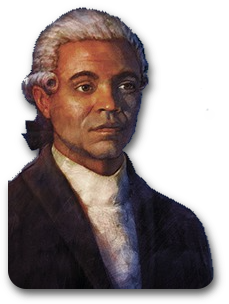
Prince Hall began life as a slave, and as a result not many early records exist. It is believed that he was born in 1735, (based on the age listed on his death certificate) but the first record of his existence is in the late 1740s, where he is identified as the property of William Hall, a leather craftsman in Boston. Prince Hall trained as a leather craftsman as well. His first son (Primus) was born in 1756 when Hall would have been 21. The practice at the time was that owners named their slaves, and so his name was “Hall” because he had been a slave.
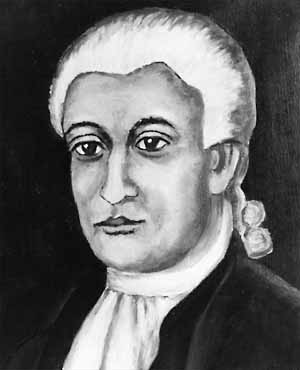
Prince Hall was freed on April 9, 1770 “after 20 years of service”, (aged 35) which implies he had begun as a leather worker when he was about 15. During this period in his life he was active in his church and owned his own leather shop in Boston (The Golden Fleece). He had been freed about a month after the Boston Massacre, during a time period where tensions had been rising between the colonials and the British.
Setting the Stage
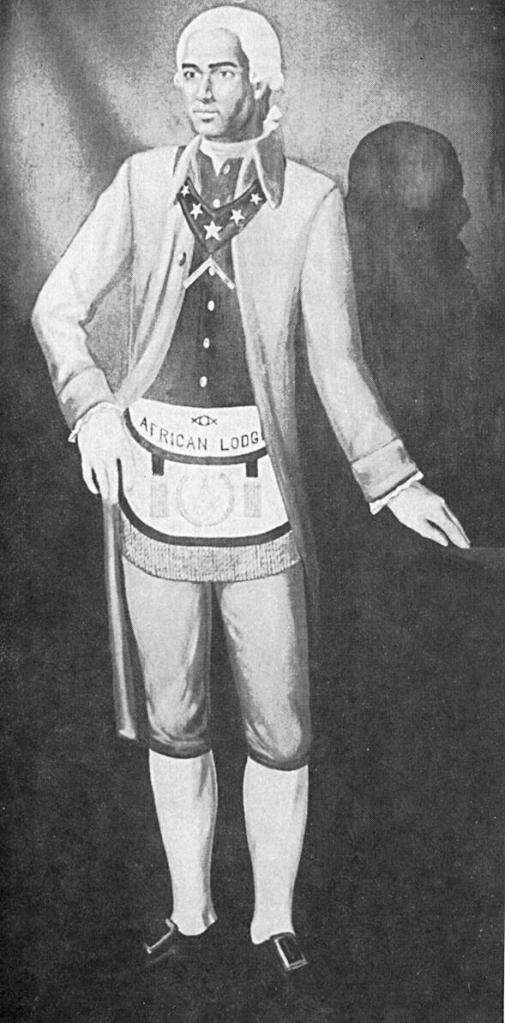
As we approach the moment when Prince Hall will be made a mason, military tensions were high, and there was a feeling there would soon be war. Prince Hall and 14 other free black men had already asked to join Boston’s St. John’s Lodge, and had been rejected. This initial rejection will become important later.
At the time, a masonic lodge No. 441 existed, attached to the 38th Regiment of Foot of the British Army. This was a so-called “traveling warrant”, because it was associated with a military unit. Lodges were not numbered per se, but rather 441 was the number of their warrant from the Grand Lodge of Ireland which had been issued in 1765. That Grand Lodge had played a key role in the spread of Freemasonry, because it was willing to warrant military lodges. The Premier Grand Lodge of England was not willing to do this, since they did not consider soldiers men of “moral standing and order”.
In 1775, the 38th Regiment of Foot (and hence Lodge 441) was stationed at Castle William in Boston Harbor, under General Thomas Gage. While we don’t know the circumstances or communication that led to it, on March 6, 1775 (when Prince Hall was around 40 years old) he and 14 other free black men were initiated, passed, and raised by this lodge.
American colonists viewed this invitation with suspicion; they believed that the British were planning to arm the blacks and have them fight in exchange for liberation after the war. Hall saw membership in the Masons as an opportunity for blacks to seek social and economic advancement.
Prince Hall Biography
This happened just weeks before the battles of Lexington and Concord kicked off the hostilities of the American Revolution War.
Army Service?
It must be noted that for all the racist suspicion of the British arming black men at the time — numerous records exist of former slaves serving in the Continental Army. In Massachusetts at the time, there were at least six black men with the name Prince Hall who served on the colonial side. We are not sure if the Prince Hall himself bore arms in the war. In any case, at the time he was already 40 years old when the war started, and because we have receipts showing that he was a skilled tradesman and was selling leather craft works to the Boston Regiment of Artillery, so he was certainly serving in other ways. His son Primus did serve. Indeed later in the history of his eventual lodge, Prince Hall offered to raise a militia of fighters to put down Shay’s Rebellion.
Various sources do claim that he may have fought in the battle of Bunker Hill, which is interesting but unconfirmed. The 38th Regiment of Foot also fought at the battle of Bunker Hill, which means that Prince Hall would have been on the opposite side of the field from brothers in his own lodge, if he was present at the battle.
38th Regiment of Foot Departs
On July 3, 1776 the military unit which composed Lodge 441 left Boston, and as they were a traveling lodge, naturally took their lodge with them. Note the date – just one day prior to the adoption of the Declaration of Independence. Just prior to departing though, Worshipful Master J.B. Batt gave the black members a permit to meet as a Lodge and bury their dead in masonic form. The permit did not allow them to confer degrees or perform masonic work. Under this Permit, African Lodge was organized on July 3, 1776 with Prince Hall as Worshipful Master. Shortly afterwards, the new African Lodge #1 received a permit from Provincial Grand Master John Rowe to walk in procession on Saint John’s day.
John Rowe’s involvement here is interesting because he was the PGM of Massachusetts and a member of St. John’s Lodge, the same lodge that had refused Prince Hall membership earlier, seeming to indicate some slight bit of recognition, even if informal.
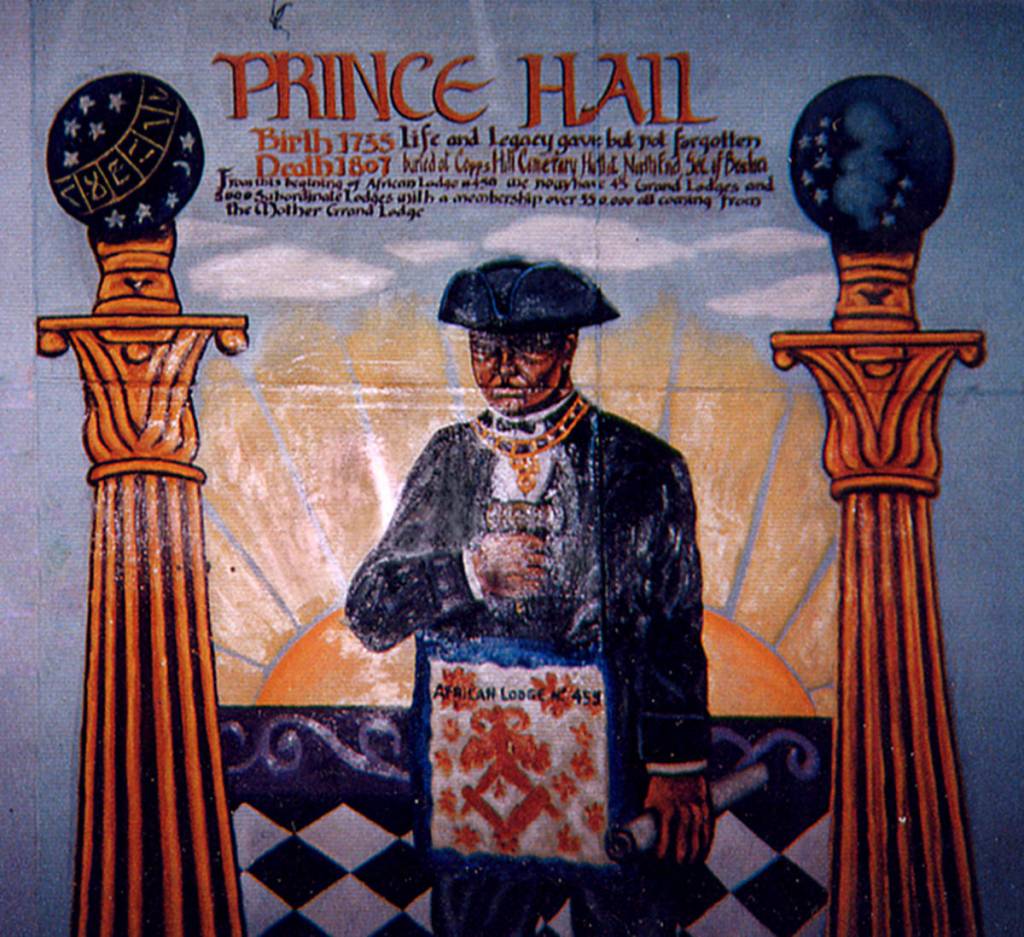
Revolutionary War Years
Between 1776 and 1783 was the most chaotic period during the middle of the Revolutionary War, and it is most likely that all of society was occupied.
The minutes of African Lodge which have survived raise as many questions as they answer. Prince Hall Freemasonry accepts that date and counts its beginning from that time. Much confusion exists concerning that period. Blacks were formerly uneducated, being restricted by law from acquiring an education, with “Black codes” legally restricting more than two or three Blacks from assembling or holding meetings. To put the entire period in proper perspective one would need to understand the racial conditions of the time. “16 One can not judge the events of the period in the same context as one judges the early beginning of the Caucasian Colonist. While present, Blacks lived in a different “time frame” in Colonial America than their Caucasian counterparts. This concept requires a rethinking for all those who would judge Prince Hall Freemasonry.
When and How Did Prince Hall Become a Mason?
Petition and Charter: Africa Lodge 459
On September 3, 1783 the Treaty of Paris was signed, formally ending the war. Because in this era it took a minimum of 5-6 weeks for news to cross the Atlantic, the Boston area would not have learned of the formal end to the war until mid November or possibly later. Prince Hall wasted little time though, and on March 2, 1784, African Lodge #1 petitioned the Grand Lodge of England (the premier Grand Lodge, the “Moderns”) for a Warrant or Charter to organize a regular Masonic Lodge. Hearing back would have to wait, as the petition had to make a slow journey over the Atlantic, be decided on, and then later return.
In this intervening waiting period, another critical development occurred. On July 8, 1784 slavery was abolished in Massachusetts with the ruling by the Massachusetts Supreme Court in the Commonwealth v. Jennison case. It was not widely publicized but the law made clear that slave owners property rights would not be defended. Actual freedom required the enslaved person to know this, and as a result many were held as slaves for years afterwards until about 1790, with some slaves, even after being “freed” reclassified as indentured servants. Still, this was a critical beginning towards freedom, which produced more free black men who could then become qualified later to become masons.

A few months after slavery was abolished in Massachusetts, Prince Hall heard back: the petition was granted on September 29, 1784 when the Grand Lodge of England issued the charter to African Lodge 459, the first Lodge of Blacks in America. Prince Hall was established as Master of the lodge, Boston Smith as Senior Warden, and Thomas Sanderson as Junior Warden.
Prince Hall’s original permit to work had been granted from a lodge holden under the Grand Lodge of Ireland, but African Lodge 459’s charter came from the Premier Grand Lodge, which was a focal point of the Ancients / Moderns dispute.
The Planted Seed
This ends the chapter in Prince Hall’s story, because once his lodge had a full charter, they were empowered to initiate members and conduct all sorts of Masonic business which eventually led to numerous additional lodges and a Grand Lodge of their own, a story for another day.
African Lodge 459 continued to work until at least 1846, and it is believed that (as of 1963) Celestial Lodge in Boston was the same Lodge now operating under a different name.
Selected Timeline
- 1735 – Prince Hall born
- Late 1740s – mentioned as the property of William Hall, the leather craftsman
- March 5, 1770 – Boston Massacre
- April 9, 1770 – (35 years of age) freed from slavery (source)
- 1773 – Hall and four other black men requested that a law be passed stating that for one day a week, blacks could work for themselves in order to buy their own freedom (source)
- March 6, 1775 (age 40) initiated, passed and raised, lodge No. 441, Irish Constitution, attached to the 38th Regiment of Foot, British Army Garrisoned at Castle William (now Fort Independence) Boston Harbor, under General Gage. The 38th Regiment had received their charter from the Grand Lodge of Ireland in 1765
- April 19, 1775 – the Battles of Lexington and Concord begin hostilities of the American Revolutionary War
- July 3, 1776 – 38th Regiment of Foot departs Boston; J.B. Batt gives Prince Hall a permit to meet & bury their dead
- 1776 – 1787 – Africa Lodge #1 meets, but does not confer degrees.
- April 1777 – Prince Hall works in the leather business, for the colonial Army; receipts show he sold drumheads to Boston Regiment of Artillery (source)
- 1777 A petition is signed by Hall and seven other African Americans asking the General Court to abolish slavery because it was not consistent with the Patriot cause. The Congress of the Confederation took no action.
- July 8, 1783 – slavery abolished in Massachusetts
- September 3, 1783 – the Treaty of Paris was signed between Great Britain and the United States, recognizing the United States, making peace between the two nations, and formally ending the American Revolution.
- March 2, 1784 – African Lodge #1 petitioned the Grand Lodge of England (the premier Grand Lodge, the “Moderns”) for a Warrant or Charter to organize a regular Masonic Lodge, with all the rights and privileges thereunto prescribed.
- September 29, 1784 Grand Lodge of England issued a charter to African Lodge 459
- 1785: the written record of African Lodge 459 appears to begin, with scraps of letters, meeting minutes, and correspondence from Prince Hall emerging.
References
- Thomas, William. “FREEMASONRY IN THE BRITISH ARMY.” Journal of the Society for Army Historical Research, vol. 14, no. 53, 1935, pp. 24–32. JSTOR, http://www.jstor.org/stable/44227900. Accessed 18 July 2020.
- Locker, Nicholas B (P.G.M) The Restoration of Amity between the United Grand Lodge of England And the Most Worshipful Prince Hall Grand Lodge of Massachusetts, April 12, 2007
- African Lodge #459 Original Charter, Most Worshipful Prince Hall Grand Lodge of the Virgin Islands
- Upton, William H. (P.G.M.) Prince Hall’s Letter Book, 1963
- Sidbury, James, Becoming African in America: Race and Nation in the Early Black Atlantic, 2007, p74
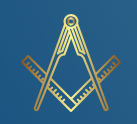
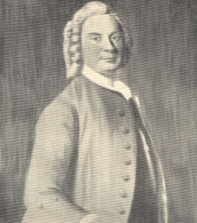
There’s a few corrections that have been discovered by RW John Hairston’s book. The actual date is that of March 6, 1778. His book Landmark of our Forefathers; A critical analysis of African Lodge No. 1.
LikeLike
Please say more – do you mean to say that March 6, 1778 was the date of which event?
LikeLike
Others have brought “Landmarks of our Forefathers” to my attention and I’ve linked it at the top of the post. I need to work through some of those materials and there appears to be a lot there but in the meantime I’ve indicated that dispute exists on this material here.
LikeLike